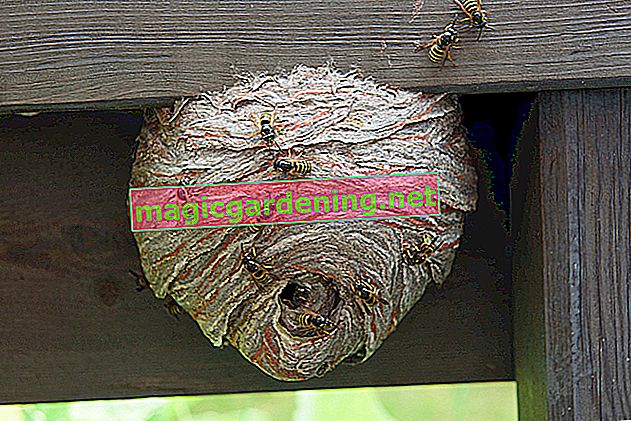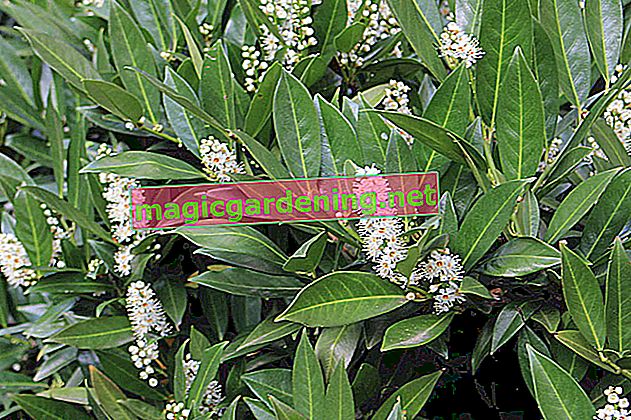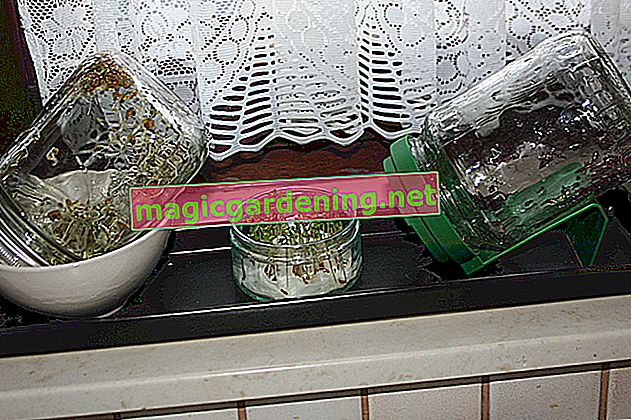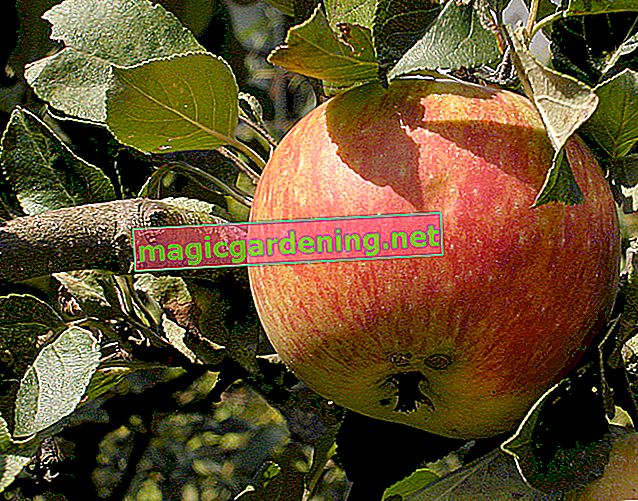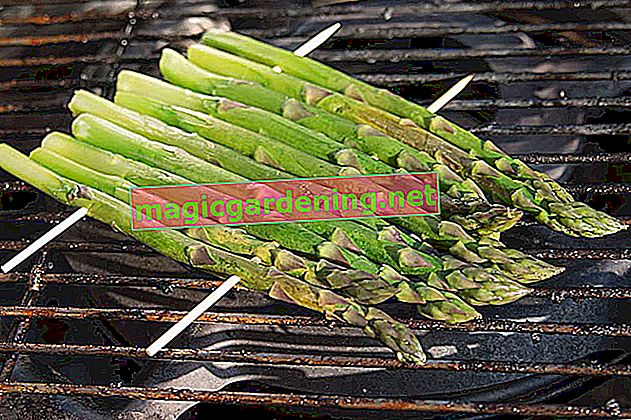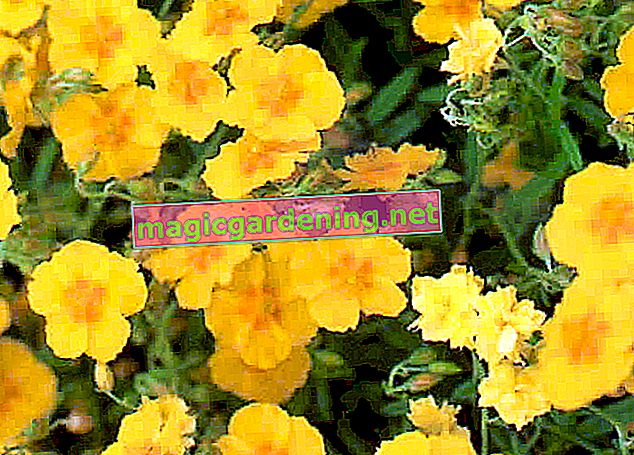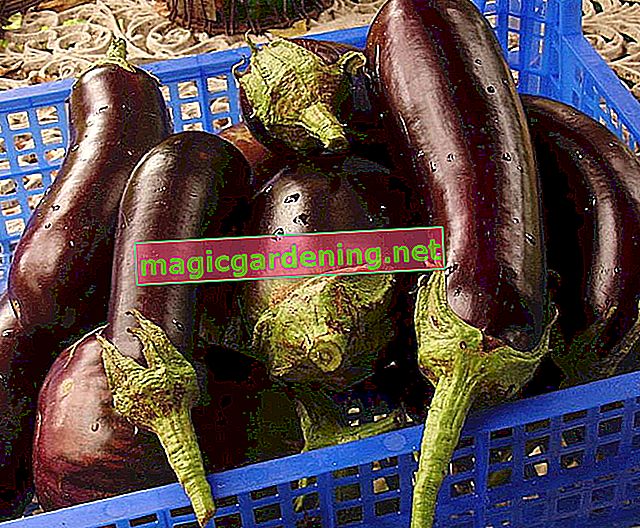
Plant montbretia properly
If the specific planting date is set in April or May, place the tuber of a Crocosmia in lukewarm water the night before. On the day itself, dig small pits with a depth of 10 to 20 cm at a distance of 35 cm in order to create a 2 cm thick layer of sand on the bottom. A handful of compost with horn shavings (€ 6.39 at Amazon *) optimizes the excavated soil. Plant the tuber of a garden montbretie at least 10 cm and a maximum of 20 cm deep and water.
also read
- Is the Montbretia hardy even in our latitudes?
- What can be the reason if the montbretia does not bloom?
- Planting Montbretia: this is how garden beauties flourish
A Montbretie garden that has been bought ready-made or grown by hand in a pot also tolerates planting in August / September. In this case, do not place the young plant lower than it was cared for in the container. It is important to note extensive winter protection from leaves and coniferous twigs, because the ornamental shrub has only limited frost resistance.
Continue reading
Care tips
The Montbretie garden fulfills all expectations as a majestic ornamental shrub if it is given the following care program:
- Water abundantly and regularly without waterlogging
- Fertilize twice a season, in May and July
- Clean off dead flowers immediately
- Cut back the withered stems in autumn to just above the leaves
- Only cut the leaves close to the ground when they have been completely drawn in
If the Crocosmia lingers in the bed through the winter, it cannot get through the cold season without a thick layer of leaves, straw and brushwood. In rough locations you can get the tubers out of the ground in autumn after pruning them so that they can overwinter in the cool, dark cellar in soil and sand.
Which location is suitable?
The Montbretie garden favors a shady location. Specifically, this requirement implies a bright location that cannot get under the blazing midday sun. In addition, no canopy casts a shadow on the ornamental shrub. Crocosmia wants the soil to be nutrient-rich, loosely humic and fresh and moist with good drainage.
Continue reading
What soil does the plant need?
The sunnier the location, the more humid the soil should be. The Montbretie garden may not be bothered by waterlogging, whereas nutritious, deeply humus soil is welcomed. If you cultivate a Crocosmia in the bucket, choose a substrate that is as low in peat as possible so that permanent water storage is ensured.
What is the best time to plant?
The wise choice of the planting time contributes significantly to the winter hardiness of a Montbretie garden. Since all crocosmia in our latitudes are not completely hardy, we recommend spring planting for tubers from April to May. If you prefer the classic planting time for the ornamental shrub from late summer to autumn, it should be a preferred, potted garden Montbretie.
When is the flowering time?
The up to 20 individual flowers along the stiffly upright stems unfold their splendor almost throughout the summer. Look forward to a flowering period from June / July to August, which in good years extends into September. The more consistently you clean off withered flowers during this time, the more lavishly the Crocosmia will present you with its floral beauty in bright orange, deep red, intense yellow or elegant apricot.
Continue reading
Cut montbretie properly
The secateurs are used on various occasions when it comes to properly caring for the Montbretie garden. The following overview lists all occasions with tips on how to do it:
- As a vase decoration: cut the crocosmia when the lower flowers have just opened
- For a long flowering period: Clean out wilted flower panicles regularly
- Preventing the formation of seeds: cut off dead stems to just above the leaves
- Central pruning: either in autumn or late winter, cut the leaves to just above the ground
Make sure to wait with the main cut until all leaves have yellowed. Until then, the tuber draws in the remaining nutrients in order to create a depot for the next season.
Fertilize montbretie properly
The Montbretie Garden gratefully accepts starting fertilization in May in the form of compost, horn shavings or guano granulate. During the summer flowering season, you can replenish the nutrient reserves with another fertilization in June / July. If the Crocosmia thrives in the planter, fertilize in the same rhythm with a practical liquid preparation.
Overwinter
If a Montbretie garden thrives in a mild winter location, there is a prospect of a healthy winter. The most important requirement is extensive winter protection, because the Crocosmia does not survive temperatures below -10 degrees Celsius. Leave the foliage on the plant until late winter as it will act as a natural coat. In addition, pile up a 20 to 30 cm thick layer of leaves on the root disc, which is covered with needle twigs. Put the perennial in the pot in the frost-free, light winter quarters, where it is watered from time to time so that the root ball does not dry out.
If the garden is in a winter gray region, treat the Crocosmia like the related gladioli. In autumn, cut the leaves when they have completely drawn in. Then dig up the tuber and wrap it in newspaper. Alternatively, the Montbretie garden lingers in a wooden box filled with earth and sand in the dark, frost-proof cellar.
Continue reading
Propagate montbretia
From the second or third year of standing, the Montbretie garden develops bulbs at the base of its underground perennial organ. Cut this from the mother tuber in spring or autumn with a sharp, disinfected knife. In small pots with a mix of potting soil and sand, you care for these daughter tubers on the warm windowsill until they have turned into vital young plants. The rooting proceeds extra quickly if you put a transparent hood over each pot until the first shoot.
Continue reading
How do I transplant properly?
To prevent crocosmia from suffering from soil fatigue, they should be transplanted every 3 years. To do this, choose an appointment in spring, when the ground is completely thawed. The measure itself is straightforward. The root ball is loosened with the digging fork in order to lift it out of the ground with the spade. Now is a good opportunity to cut off daughter tubers for propagation. At the new location, plant the Montbretie garden again 10 to 20 cm deep in the nutrient-rich, loose soil.
Nice varieties
- Lucifer: Montbretie garden in flaming red, whose beauty has won several awards; Height 80-120 cm
- Rheingold: The large-flowered Crocosmia impresses with its golden yellow flowers and vigorous growth; Height 50-60 cm
- George Davidson: This ornamental shrub stands out with its bright orange flowers: stature height 50-60 cm
- Emily McKenzie: Distinctive variety with orange flowers and a bronze ring in the middle; Growth height up to 75 cm
- Lady Hamilton: A feather-light flower beauty in yellow with an apricot-colored tube in the heart; Height 50-60 cm
- Giant Montbretie: Mighty Crocosmia that easily reaches 120-150 cm in height; Support recommended


